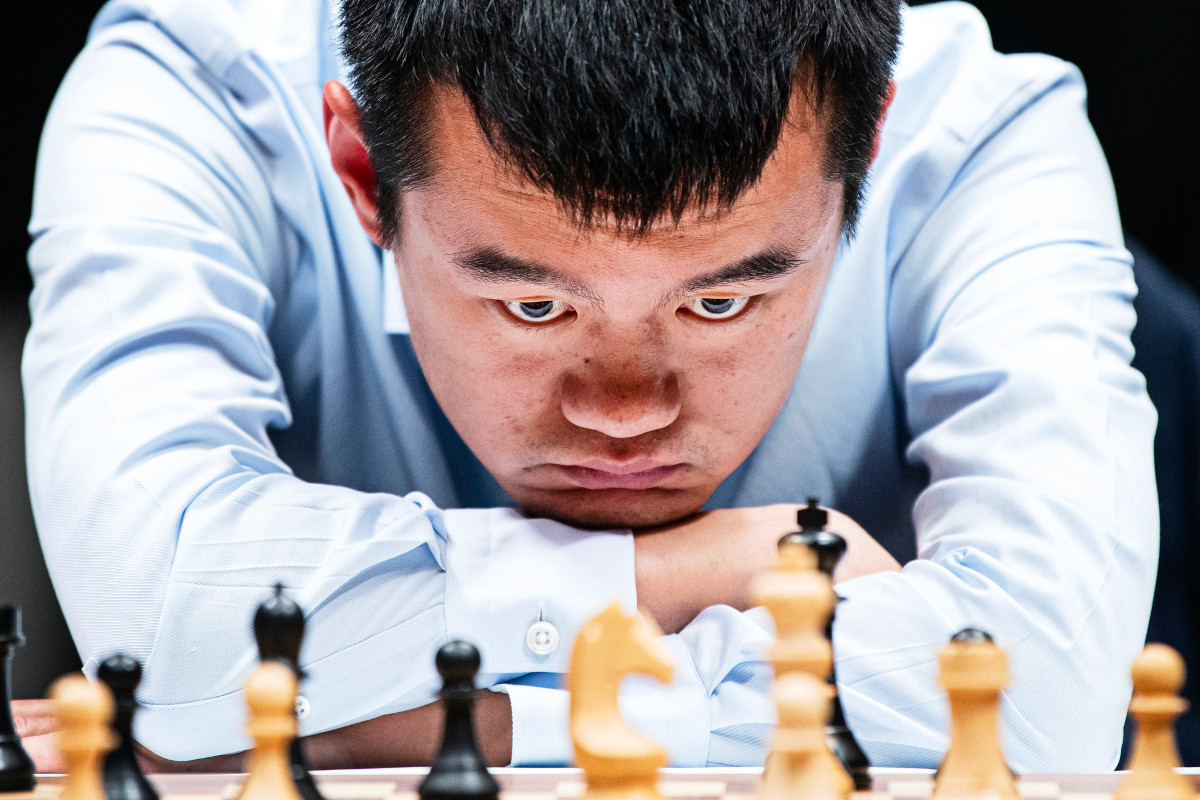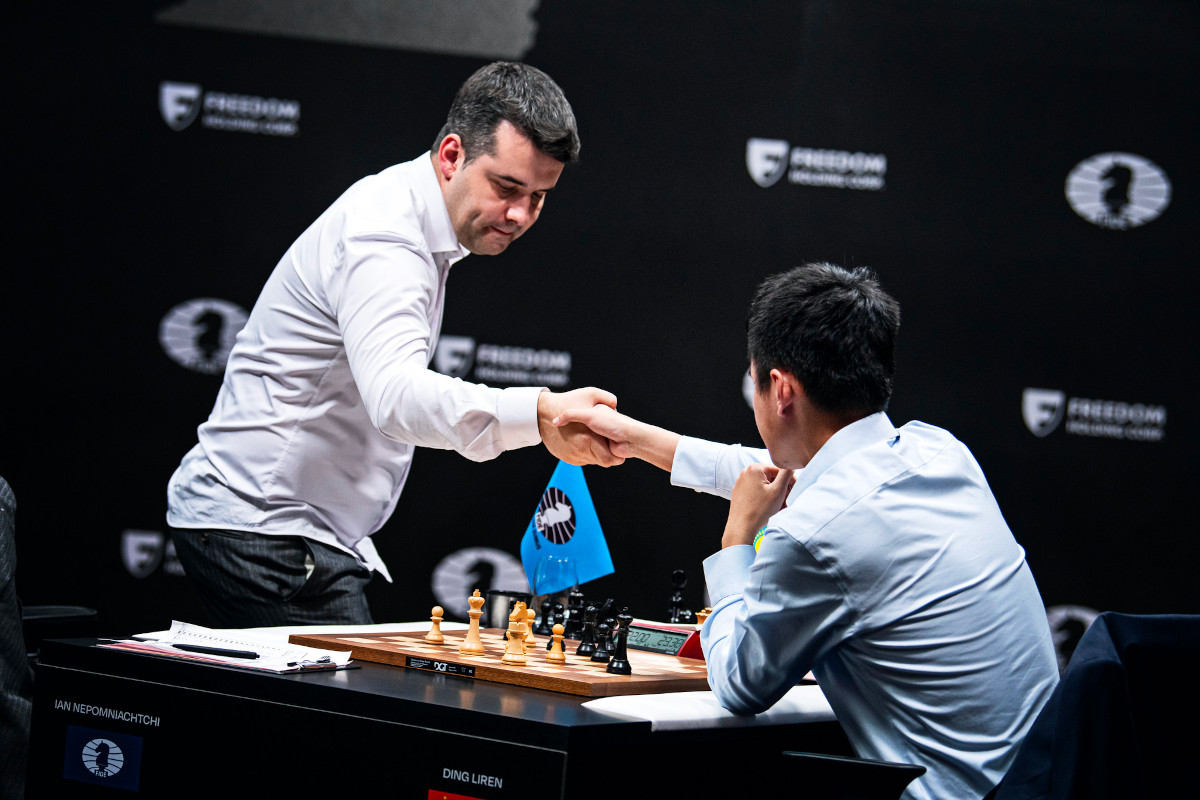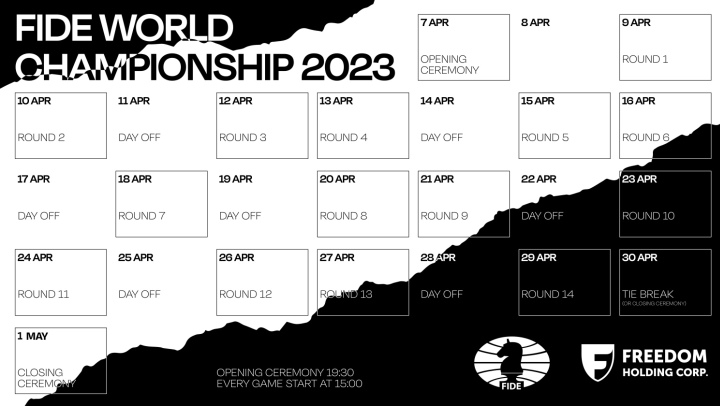


Find expert commentary — video and game annotations — by well-known coach and author IM Robert Ris at the end of the article.
The World Championship match in Astana continues to impress. Game 5 was one for the history books, as Ian Nepomniachtchi achieved a victory of the kind that is rarely seen in modern chess — the increasingly sophisticated use of computers tends to favour defensive attempts. The Russian got a strategic advantage in the opening and all but flawlessly converted it into a win. And he did it out of a mainstream theoretical opening.
This was the third decisive result in only five games, making for a very enjoyable spectacle, proving once again that classical chess can be fun to follow. Anish Giri, who is very much in favour of growing chess’ online presence, had this to say after the game:
Call me elitist, but if you don't like this match, you are not a chess fan.
— Anish Giri (@anishgiri) April 15, 2023
Unlike what happened at the 2021 match in Dubai, where Magnus Carlsen was dominant once things started going his way, we have already seen momentum changing sides twice in Astana. Nepo looked in control after the first two games, but Ding Liren recovered magnificently following the rest day, as he levelled the score with a win in game 4.
Given his previous meltdowns, pundits began to mention a potential collapse by Nepo — but the Russian came back stronger, scoring a victory in what is sure to become one of the most analysed games of the year.
Predicting the outcome is all but impossible. So much so that perhaps it is time to add a new verb to the dictionary, as suggested by Kostya Kavutskiy:
New word just dropped! 📕 #NepoDing pic.twitter.com/bcDSXqNOUj
— Kostya Kavutskiy (@hellokostya) April 15, 2023
Adding more layers to the drama, the Russian news portal Chess-News shared breaking news on Twitter: Andrei Shitikhin, writing for ‘Championship’, mentioned in passing that former world champion Vladimir Kramnik is leading Nepo’s team in Astana. A photo of Kramnik in Astana was also shared — albeit, he might be there simply as a participant of the rapid and blitz event that will take place next week.
During his competitive career and beyond, Kramnik has been known as a brilliant theoretician, especially after showing tremendous preparation to beat Garry Kasparov at the 2000 World Championship match. Coincidentally, Nepo’s victory in game 5 was not only a remarkable showing of general chess understanding, but also a great achievement in opening preparation.

Will Ding Liren manage to bounce back on Sunday? | Photo: FIDE / Stev Bonhage
Nepo all but blitzed out 22 moves on Saturday. He was deeply prepared to face this specific variation of the Ruy Lopez, and was clearly familiarized with the middlegame consequences. Ding, on his part, spent over 13 minutes on move 12 and reflected for a few minutes four more times before reaching move 20.
Giri, who is commentating for chess.com, noted that Ding probably had analysed the line rather deeply, since he kept making the most precise moves in the position — perhaps he did not look at the line just before the game, though.
After 22 moves, the stage was set for the upcoming strategic battle:
Here Nepo used over 6 minutes before playing the “very classy” 23.h4 (Robert Ris), as he realized that he needed to patiently make progress on the kingside. Two more pawn pushes by White followed — 23...Qc6 24.h5 c5 24.d4 — as the contenders partially resolved the tension in the centre.
What followed was a masterclass by Nepo, who was stronger than Ding in the kind of position that the Chinese often handles magnificently. Or as Olimpiu di Lupi put it:
Ding Liren was outplayed today, from start to finish. pic.twitter.com/kXOld3nUjW
— Olimpiu Di Luppi (@olimpiuurcan) April 15, 2023
Ding did not exchange his dark-squared bishop for a knight when he had a chance, and saw Nepo manoeuvring his pieces freely along the light squares. On move 37, Nepo got to play a good-looking pawn break on the kingside.
It is incredibly difficult for Black to react effectively to 37.g5. Engines give 37...Qd7 as the best alternative, but finding such a move in time trouble is difficult for any human, even for one of the strongest grandmasters in the world. Ding went for 37...hxg5 instead, and soon saw his defences collapse.
There followed 38.Rg4, and Black cannot play 38...f6 to defend the g5-pawn and solidify his structure — in that case, White has the marvellous 39.Nh4
39...gxh4 fails to 40.h6 and White has enough firepower with the queen, rook and kingside pawns to win the game, while any other move allows the knight to reach the formidable outpost on g6.
Naturally, Ding did not enter this line, as he played 38...Ra8 instead.
The aforementioned variation was only one of many potential lines that Nepo calculated correctly on his way to a remarkable victory (check out Robert Ris’ analysis below for more details). Queens eventually left the board, but by that point it was too late for Ding — Nepo’s rook, knight and f-pawn were too much to handle for Black’s lone king.
48.Rh6 was the elegant move that prompted Ding’s resignation. White’s pieces are perfectly coordinated, with the knight ready to jump to g5, and White’s king sitting on an active square after having patiently travelled from g1 to g4 via the light squares.
All the while, Black’s dark-squared bishop has become a mere spectator. It was time to call it a day and focus on the next encounter. 1-0

Ding Liren resigns the game | Photo: FIDE / Stev Bonhage

| Advertising |